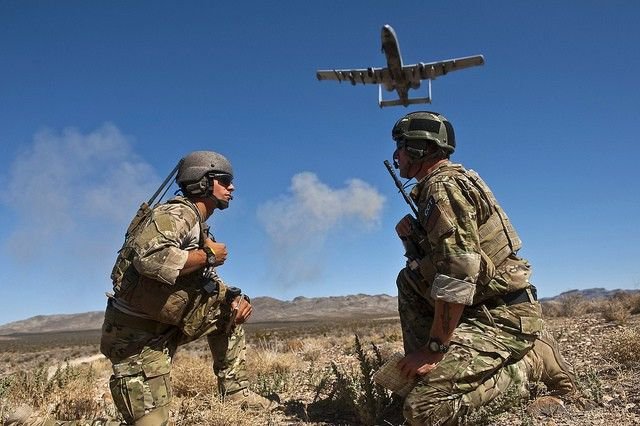"We thought the planes were leading the [reconnaissance] of the Daesh positions. But soon after, we were attacked by coalition fighters that hit our tanks, armored vehicles and artillery pieces. They were finishing with machine guns our soldiers who tried to take refuge in the streets. Each fighter jet fired at least three missiles at us. I saw with my own eyes the death of about 100 soldiers. They shelled our soldiers in retreat. Many of them perished because injured and could not move", he said.According to the accounts, the strikes involved, among other aircraft, two A-10 "Warthogs". Funny thing about A-10s. For attacks of this sort, the usually utilize JTACs (Joint Terminal Attack Controllers), i.e., U.S. troops embedded on the ground who call in the strike.
"Immediately after the air raid, the jihadists went to attack the Syrian military positions. Daesh attacked our positions, our soldiers were captured. I had the impression that there was an agreement between the United States units and Daesh. The terrorists were jubilant, they fired shots into the air as if they were celebrating something", said the soldier.
General Herbert Carlisle says:
No airframe conducts close air support of ground forces as good as the A-10, but that's essentially the only mission it can do ...From Breaking Defense:
Also, the A-10 doesn't have the sort of sophisticated sensors you find on newer attack aircraft, so independent targeting is more difficult for them. We're waiting for confirmation, but it's almost a certainty that Joint Forward Air Controllers are providing targeting info to the A-10s in Iraq. That's something that wouldn't happen in Syria as we are supposedly not sending any troops there.Retired Chief Master Sergeant Russell Carpenter told PBS in 2014:
It was developed with the intent to operate in an environment where the enemy contested the airspace. It was designed to operate in support of ground forces and built to take punishment from surface-to-air fires.That said, the A-10 can operate as an airborne controller for other aircraft, but the downside to using an A-10 for this purpose is that it is a low- and slow-flying plane, vulnerable to anti-aircraft missiles.
The U.S. claims it was targeting Daesh. If so, why use A-10s, putting them at risk of Daesh SAMs (surface-to-air missiles)? Daesh has taken down several Syrian aircraft in this manner.
Why use an aircraft "designed to operate in support of ground forces" - "the only mission it can do" - if there were no ground forces to support?
The best possible answer is simple: the A-10s were used in support of ground forces. Daesh terrorists acted as U.S. JTACs. Either that, or the U.S. has JTACs embedded with Daesh. Maybe some of those U.S.-trained "New Syrian Army" militants who have been caught "defecting" to Daesh?




news from multiple sources report that shortly after the intentional u.s. murder of approx. 80 Syrian soldiers, 3 Kalibr cruise missiles were launched by Russian warships from the eastern Med, resulting in the destruction of an intel facility in northern Syria, manned by now dead u.s., IDF, NATO and gulf states military personnel... no MSM reports have yet surfaced in the u.s. or in the e.u.